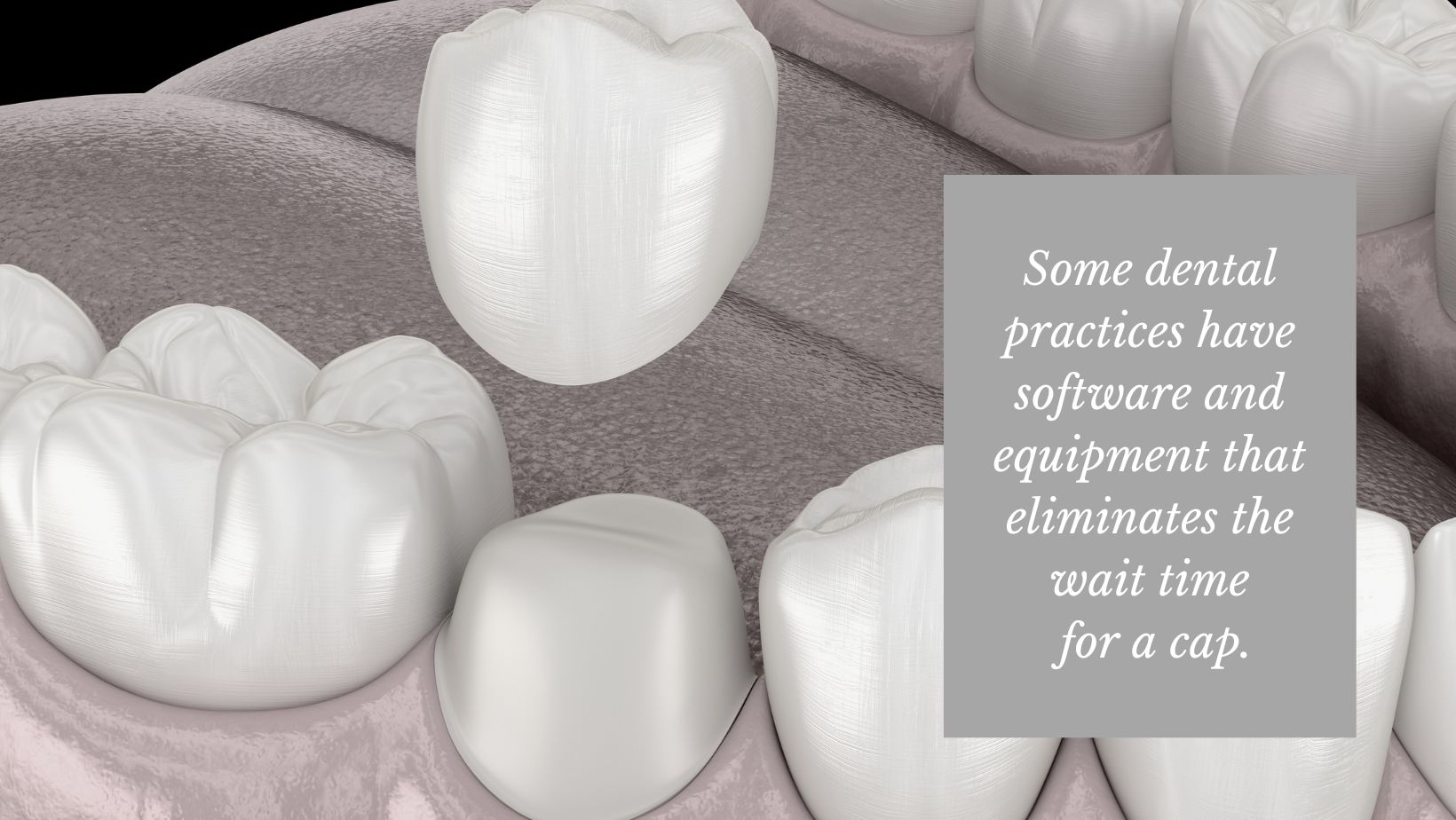When a tooth has extensive damage or decay, a dentist might recommend capping it. Capping a tooth is a common dental procedure that is more involved than a traditional filling. But when is a cap the right choice, and is it worth the money? Here is a look at the benefits of a cap as well as what to look out for.
Caps vs. Crowns
Capping a tooth is a common dental procedure that involves placing a protective cover over a damaged or weakened tooth. A cap is also known as a dental crown. While caps and crowns are technically the same thing, “cap” is an older term that is sometimes still used by patients and dentists.
Unlike a dental filling, which fills a hole in a tooth after the dentist removes a cavity, a cap or crown covers the tooth completely and is used to fix more severe issues. These days, crowns are typically made from composite resin, porcelain, ceramic fused to metal, or gold. Each cap is custom-made to closely replicate the look of the tooth being restored. While gold crowns are the most noticeable, other materials like porcelain and composite are tinted to closely match the patient’s natural tooth color.
What are Caps For?
There are many reasons a dentist may recommend a cap for a patient:
After a root canal. The most common use for a cap is to protect a tooth after a root canal. But a tooth doesn’t always need a root canal to get a crown. A cap may also be recommended for a tooth with one or more cavities that are too extensive to be repaired with a filling alone.
Repair damage and fix cosmetic issues. Dental caps can also be used to correct damage or cosmetic issues. A cap is a great way to repair a tooth that is cracked or broken, and can restore the tooth’s strength and prevent further damage. Caps can also be used to cover teeth that are discolored or misshapen, improving the appearance of a patient’s smile.
The final touch for missing teeth. Finally, dentists sometimes use caps to hold dental bridges in place or to cover dental implants.
No matter the reason, the cap’s main job is to seal the natural tooth from bacteria and make its structure stronger. By forming a barrier, it can prevent further decay and damage and save a tooth that might otherwise have to be extracted. This can help to preserve the tooth’s natural structure and avoid the need for more extensive dental work in the future.
When fixing extensive decay or damage, dental crowns can help to restore a patient’s ability to chew and speak comfortably, improving overall quality of life.

Capping a Tooth
Placing a dental crown or cap often involves two visits to the dentist’s office. During the first visit, the dentist will examine the tooth and take x-rays to assess the extent of the damage. If the tooth is severely decayed or damaged, the dentist may need to perform a root canal before placing the crown.
Next, the dentist will prepare the tooth by removing any decay or old fillings. Then impressions are made of the tooth and surrounding teeth using putty. These are sent to a dental lab where the custom-made cap will be molded to look like the tooth it is covering. In the meantime, the dentist will likely place a temporary cap over the affected tooth to protect it until the permanent crown is ready. The cap fabrication process usually takes about two weeks.
During the second visit, the temporary crown will be removed so the permanent crown can be placed. The dentist will check the fit and make any necessary adjustments before cementing the crown into place.
Some dental practices have software and equipment that eliminates the wait time for a cap. Using a handheld 3D scanner, they can take digital measurements of the tooth and then carve the cap on-site. Measuring the tooth, creating the cap, and placing it in the patient’s mouth can all happen during one appointment.
Dental Cap Concerns
Once a patient has a dental cap or crown, there are a few concerns to keep in mind.
Keep them clean and healthy. First, like any dental restoration, it is important to keep a cap clean with brushing, flossing, and regular dental check ups. At each checkup, the dentist will ensure the cap fits properly and is in good shape. And, paying special attention to dental hygiene can prolong the life of the cap and help prevent future decay.
Be on the lookout for excessive pain. Patients should also be aware of any pain they experience from a cap. If discomfort or sensitivity lasts longer than a day or two after the procedure, it is important to check in with the dentist. There may be a chance that the crown is not fitting completely over the exposed area of the tooth. In some cases, decay is more extensive than originally thought and the patient may require a root canal. Regardless of the cause, post-procedure pain should be mild and short-lasting. If that is not the case, it’s time to call the dentist.
The bite might feel “off.” Once the numbness from the procedure wears off, the patient’s bite may feel different with the new cap. A short period getting used to the cap is normal. However, if it still feels uncomfortable after a few days, the dentist may need to reshape the biting surface so the patient can bite and chew comfortably. A misaligned bite is not just uncomfortable; over time it can create serious problems with the teeth and the jaw.
Of course, patients should also visit the dentist if a cap becomes damaged or detached. Crowns are made of strong material, but they are not indestructible. Damaged caps should be repaired or replaced as soon as possible to protect the patient’s tooth from decay as well as pain or sensitivity.
What Happens When You Don’t Get a Cap?
Typically, when a dentist recommends a cap, it is to repair a fairly serious problem that cannot be fixed with just a filling. Though a cap is usually more expensive than a filling, in severe cases a dental crown may be the only way to save a damaged tooth from extraction. If a patient’s tooth has extensive decay and a dental crown is not placed, the tooth may continue to deteriorate. Over time, this can lead to pain, infection, increased expense, and even tooth loss.
If a cap is recommended to repair a cracked or chipped tooth, the fracture can become worse if a crown is not placed. This can lead to cosmetic issues, decay, and infection if bacteria gets into the damaged portion of the tooth. In most cases, if a cap is recommended by the dentist, it is important to schedule the procedure as soon as possible to avoid further damage or decay. The ability to save a tooth from potential extraction and preserve the look of the patient’s smile makes the cost and time for getting a cap worth it.
The best way to find out if you need a cap is to make an appointment with a qualified dentist in your area. Get started with our online dentist search.


